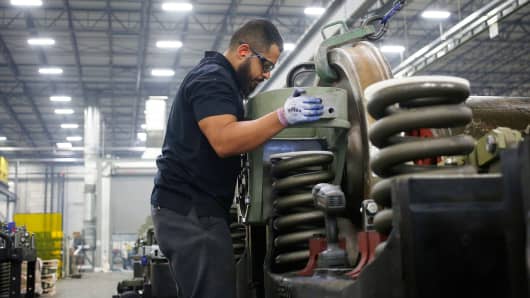Business economists expect the U.S. economy to pick up speed next year, but not as quickly as Donald Trump promised during the election campaign.
In their latest economic outlook, forecasters surveyed by the National Association for Business Economics said they expect the U.S. gross domestic product to end 2016 with an average annual growth rate of just 1.6 percent, before strengthening next year to a 2.2 percent annual growth rate.
In September, Trump said that his proposed tax cuts and deregulation would add 25 million jobs over 10 years and boost economic growth to 3.5 percent.
"My great economists don't want me to say this, but I think we can do better than that," he said in a speech to the Economic Club of New York.
After a dismal performance earlier this year, U.S. GDP growth picked up sharply in the third quarter, to a 3.2 percent annual rate from just 1.4 percent in the second quarter.
But the NABE panel expects that pace to slow next year, in line with the average pace of growth since the end of the Great Recession.
"The slow pace of growth in recent years may be the 'new normal,' as more than 80 percent of survey panelists estimate that the potential rate of economic growth will be 2.5 percent or lower over the next five years," said NABE President Stuart Mackintosh in a release.



